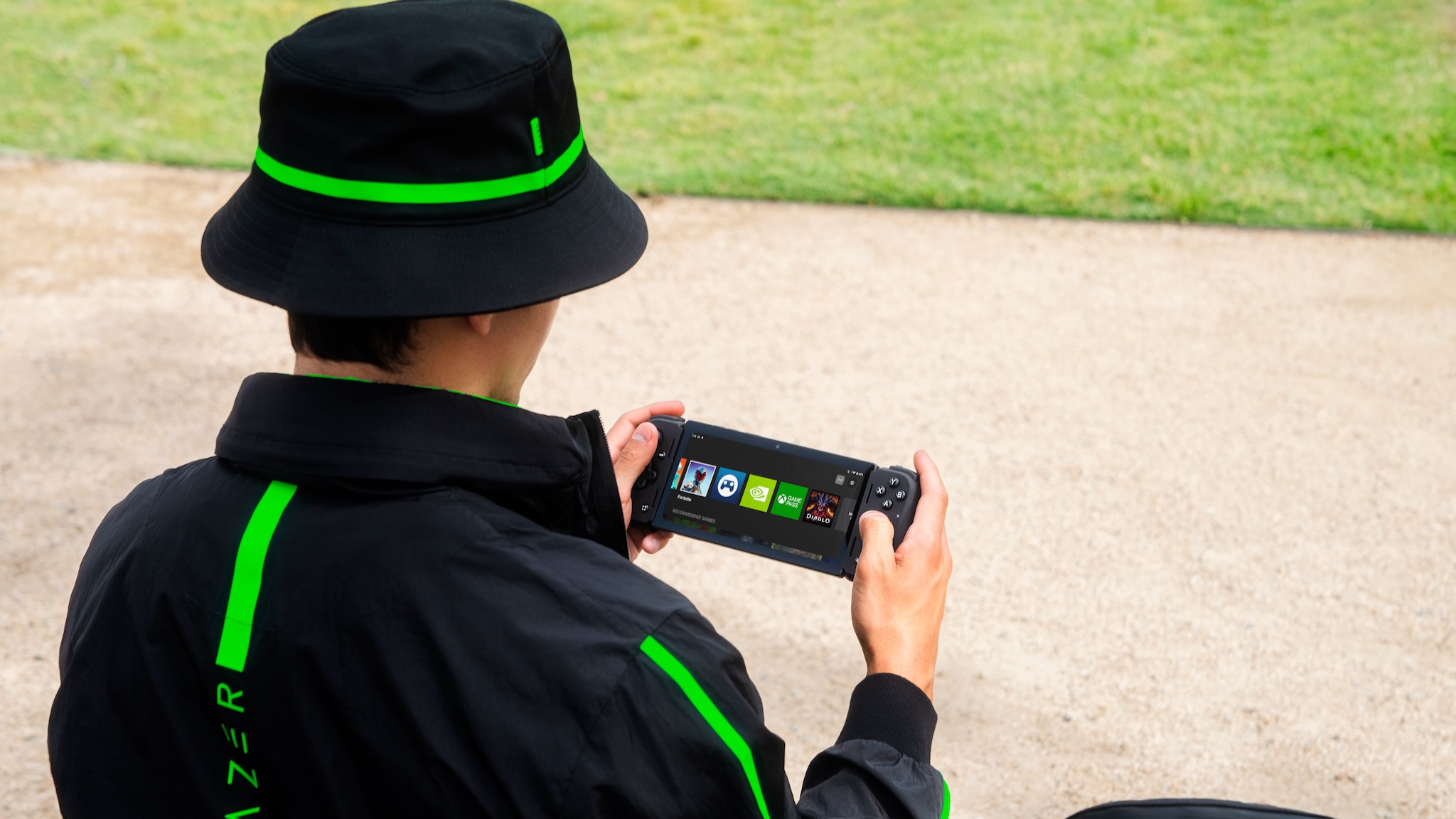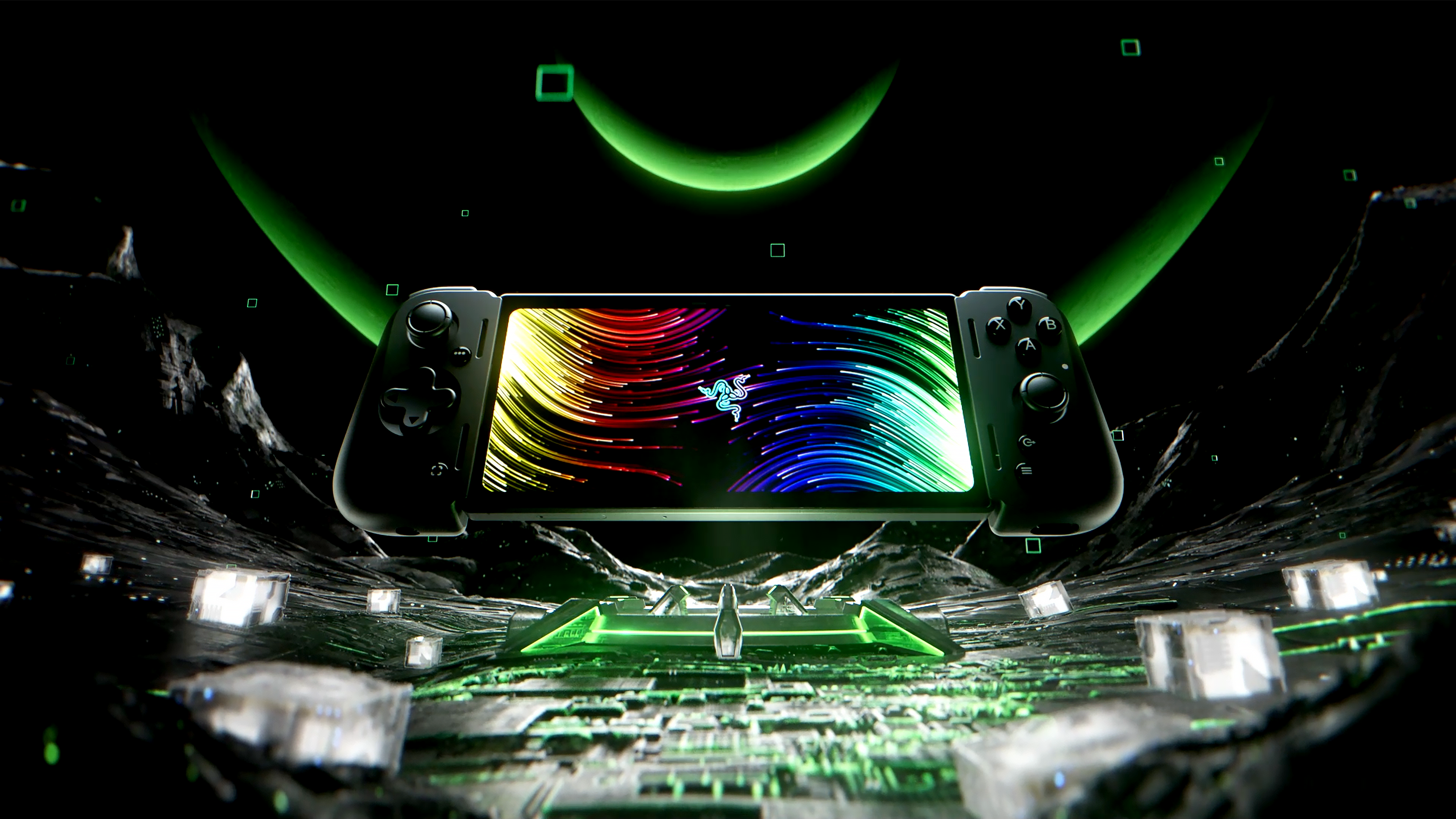New Razer Edge Android gaming console the latest to go all-in on cloud gaming
It's available in both Wi-Fi and 5G variants, comes out early next year, and can be reserved now.

What you need to know
- The Razer Edge 5G is a handheld gaming console powered by a Snapdragon G3x Gen 1 Gaming Platform, 8GB of memory, and the Verizon 5G network.
- It has a 6.8-inch, 2400x1080, 144Hz AMOLED™ touchscreen display with 288Hz touch sampling, and uses an exclusive Razer Kishi V2 Pro controller.
- It will support Epic Games Store, Xbox Cloud Gaming, Nvidia GeForce Now, Steam Link, and Xbox Remote Play.
- The Razer Edge Wi-Fi is a $400 console with the same specs but no 5G option, and it's available to reserve today though the Razer beta program.
- The 5G version will sell exclusively through Verizon starting in January 2023.
It's ironic that so many cloud gaming devices are launching right after the death of Stadia. Acer, Lenovo, and ASUS are launching gaming Chromebooks, a Logitech G Cloud Gaming console arrives this October, and now the Razer Edge and Razer Edge 5G will allow gamers to enjoy both Android games and cloud games on the go.
Announced during the RazerCon livestream alongside Razer's new PS5 Hammerhead earbuds, the Razer Edge is a 6.8-inch mobile device running on Android 12 and the Snapdragon G3X Gen 1 gaming platform, designed to enable 144Hz gaming and 10-bit HDR, as well as low-latency cloud gaming through Wi-Fi 6E.
It also has venting on the back for active cooling, as well as a front-facing camera if you want to stream yourself playing from the device using the Nexus app.
Because it's an Android device, it'll run all of the best Android games easily enough. but it'll also play cloud games on most popular platforms, as well as support apps that let you remotely play PC games from a nearby computer. It's preloaded with Steam Link, GeForce Now, and Game Pass — no word on whether Amazon Luna will be supported.
You'll play them using the bundled Razer Kishi V2 Pro controller, which attaches to the Edge tablet and has all the same perks as the Razer Kishi V2 but with a 3.5mm audio port and "HyperSense advanced-haptic feedback," which means microswitches in the buttons and D-pad for "tactical response and instantaneous actuation."

The Razer Edge will have 8GB of memory, 128GB of storage, a 5,000mAh battery, 2-way speakers, and 2 digital mics. It weighs 263.8g or 400.8g with controller, and measures 259.7 x 84.5 x 10.83mm. And the Razer Edge 5G will have sub-6 and mmWave 5G support, so you can stream games away from home as well as on your network.
Most of these specs are respectable but not ground-breaking for a mobile device; the 6.8-inch ROG Phone 6 Pro with its 12-18GB of RAM and 700Hz touch sampling would win the day here. But that costs more than twice as much as the Razer Edge and doesn't have a gaming-centric interface; Razer's device is more affordable — at least the Wi-Fi version is — and more specialized.
Get the latest news from Android Central, your trusted companion in the world of Android
But considering it'll be streaming cloud games, the Razer doesn't necessarily need a ton of RAM to succeed.
Right now, you can reserve the Razer Edge if you live in the United States, with a planned release date of January 2023 and a $400 price tag. As for the Razer Edge 5G, it'll sell directly from Verizon, and we don't know how much more it'll cost.
At $400, the Razer Edge costs the same as Steam Deck. Even though they're two very different types of devices, it'll be interesting to see how gamers react to the Edge, given its dependence on cloud gaming instead of built-in hardware.

Michael is Android Central's resident expert on wearables and fitness. Before joining Android Central, he freelanced for years at Techradar, Wareable, Windows Central, and Digital Trends. Channeling his love of running, he established himself as an expert on fitness watches, testing and reviewing models from Garmin, Fitbit, Samsung, Apple, COROS, Polar, Amazfit, Suunto, and more.
